| |
|
|
| |
Mira Mar Veterinary Hospital
|
|
| |
|
|
| |
|
|
| |
|
|
|
|
| |
Hug Your Cat Day 2022
|
|
| |
|
|
| |
It seems like an auspicious day to send out our June email newsletter... June 4th is HUG YOUR CAT DAY!
We know that not all cats are the hugging type, so make sure you take it slowly! If you don't have a cat, consider helping out at a local cat shelter, or 'borrowing' a huggable moggy from a neighbour or friend.
Happy Hug Your Cat Day from the cat lovers at Mira Mar Vets! |
|
|
|
| |
If you have been at the clinic recently, you might have seen some new friendly faces! Please welcome our new staff members.
Dr Sara Gendle is our new veterinarian. Sara comes to us from Perth, where she has been working at a busy high-level small animal clinic. She brings with her lots of experience with complex cases and surgeries. Actually an Albany girl, Sara completed some of her practical work with us during vet school. She has now returned to her hometown, and we are thrilled to have her back!
Brehanna Gillam is our new receptionist. Bre has never worked in a vet clinic environment before, so we are taking things slowly, as there is a lot for her to learn! Bre has a menagerie of pets at home, and has settled in super quickly to her new workplace.
Please feel free to give our new staff members a nice Mira Mar Vets welcome next time you are in the building! |
|
|
|

|
| |
Fuel for mischief!
|
|
| |
|
|
| |
How can you support your new pup’s growth and development? Offering the right nutrition and exercise is a great place to start.
Nutrition
It’s recommended that puppies are fed a high quality, complete and balanced puppy growth diet until they have reached around 80-90% of their expected adult size. For smaller breeds, this will be until they’re about 10-12 months old. For large to giant breeds, this will be until they’re about 18-24 months old.
Puppy growth diets are designed with higher levels of energy for growth, and a specific percentage of calcium (in the correct balance with phosphorous) for healthy bone development. We recommend veterinary brand pet foods to our clients, which have been tested with long-term feeding trials to ensure they are balanced and complete in macronutrients (protein, fat, carbohydrates) as well as micronutrients (vitamins and minerals).
If your dog is expected to reach an adult size of 23kg or over, it’s best to feed them a large breed puppy diet. These have intermediate levels of energy and calcium content to support the slower, steadier growth that is healthiest for these breeds.
Exercise
It’s recommended that growing puppies are not over-exercised, as this can cause damage to their immature joints. This is especially important in large breed pups, who are more prone to developmental joint problems, such as hip dysplasia. But what does this mean practically?
A good rule of thumb is to allow your growing pup to play only as they would with a pup of the same age, and supervise play to ensure they take regular rest periods. Large breed pups should not be taken jogging, or be allowed to regularly jump from heights or exuberantly chase sticks/balls, until they’re at least 13-15+ months old.
If you have any further questions about your pup’s healthiest eating or playing options, ask our expert vet team. We’ll keep your pup on the up! |
|
|
|
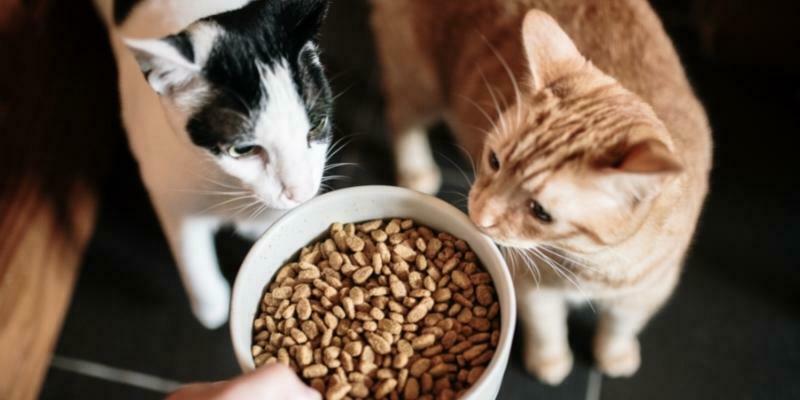
|
| |
The tastiest medicine
|
|
| |
|
|
| |
Sometimes, good food really is the best therapy. No, we’re not talking about sweets or cupcakes (although our staff would never say no to cupcakes!) – we’re actually referring to prescription diets for pets!
Here are some of the most frequently prescribed therapeutic diets for our feline patients and how they can help support common health conditions.
Kidney support diet
These diets are formulated with reduced levels of protein and salt to reduce the workload on the kidneys. They also have reduced levels of phosphorous (which can build up in the bloodstream of cats with kidney disease and contribute to unwellness), as well as added omega-3 fatty acids for anti-inflammatory effect.
Kidney support diets have been proven to improve and lengthen quality of life in cats with chronic kidney disease.
Gastro-intestinal support diets
For cats with “sensitive” tummies or temporary gut upsets, there are digestion support diets, formulated with easily digestible proteins and carbohydrates, and increased levels of fibre to help support good gut bacteria.
For pets with suspected or confirmed food allergies, we prescribe hypoallergenic diets, which contain only novel or hydrolysed (specially altered) proteins that are less likely to trigger a pet’s allergy and cause gut upset.
Weight loss diet
These diets are formulated to help cats lose excess weight, and then maintain a healthy body condition long-term. With higher levels of protein and fibre, they support fat-burning whilst helping pets to feel full and satisfied.
These diets are very useful for cats requiring significant weight loss, where simply reducing their regular food quantities would place them at risk of nutrient deficiencies and unhealthy muscle loss.
Have a chat with us today about the healthiest nutrition for your cat! |
|
|
|
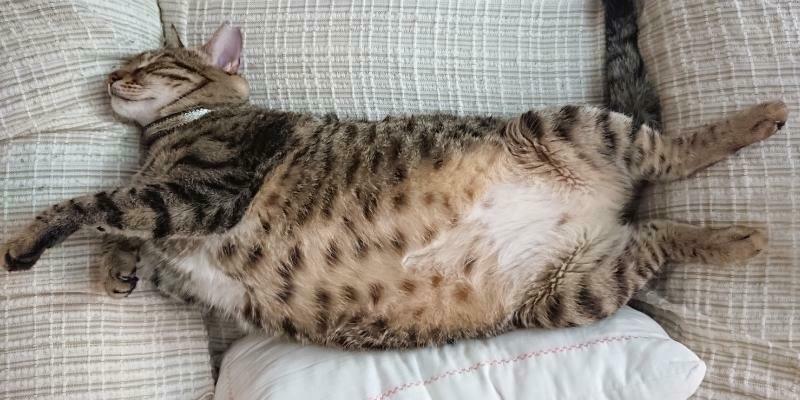
|
| |
Mass confusion
|
|
| |
|
|
| |
When it comes to body condition, we actually want your pet to get an “average” score, as this indicates that your pet is at their healthiest weight. A low score, however, suggests that your pet is underweight, whilst a high score indicates that your pet is overweight. Here’s how to assess your pet’s body condition score (BCS), and what their score could mean.
Determining your pet’s BCS
Body condition scoring is a method of assessing your pet’s weight by looking at their overall body shape, and comparing it to a pictorial scale for dogs or cats. It’s best for your pet to be in the middle of the scale, with lean, healthy muscling. If you are unsure of where your pet lies on the scale, our helpful team will be happy to assess your pet in-clinic.
Oops, my pet has a high BCS – how has this happened?
In all honesty, many well-loved animals are overweight due to inappropriate food quantities, too many unhealthy snacks and/or not enough activity.
However, dogs with an underactive thyroid gland can also be prone to excess weight gain, as can animals taking certain long-term medications, such as steroids or certain anti-seizure drugs.
Oh no, my pet has a low BCS – why?
Sometimes, pets can accidentally lose weight due to errors with food quantities (e.g. changing from one diet to a lower calorie one). However, weight loss can also occur with medical issues, such as an overactive thyroid gland, diabetes, kidney disease and gut problems causing issues with digestion.
If you think your pet may be underweight or overweight, or is experiencing sudden, unexpected changes in their body condition, it’s a good idea to have them assessed further by one of our vets. We’ll do our best to help your pet be average, in the best possible way! |
|
|
|
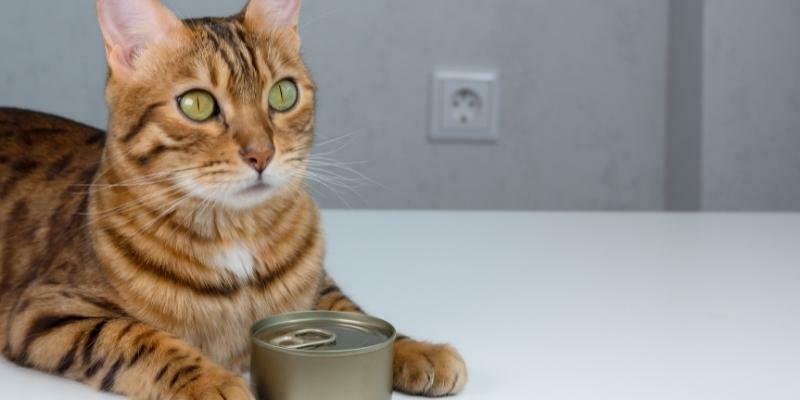
|
| |
Food for thought
|
|
| |
|
|
| |
“What is the best food for my pet?”
There is often no perfect diet to suit every pet, however there are some things to keep in mind when choosing a type of pet food for your furry friend. Here’s some of the most common food types on offer for dogs and cats.
Dry pet food
Dry pet food is easy to store and feed to your pet, and requires no preparation. Unlike meat, it can be safely left out throughout the course of a day for your pet to nibble on as required. Additionally, many dry pet foods have dental health benefits.
However, unless you serve it in an interesting fashion (e.g. in a food puzzle toy or scattered around the garden), dry food doesn’t provide your pet with much mental stimulation. Some dry foods can also be heavier in carbohydrates, which can encourage weight gain in less active pets.
Wet pet food
Tinned or sachet wet food is easy to store and serve, and many pets get excited by the meaty texture and flavour. These diets can be used on Lickimats for mental stimulation, or offered from sachets as bribery during nail clips!
However, wet pet food doesn’t have the same dental health benefits as dry food.
Home-cooked pet diets
A home-cooked diet can offer a variety of textures and flavours to provide interest, as well as help tempt picky eaters.
However, a good home-cooked diet will also require more effort in terms of storage and preparation. Additionally, many home-cooked recipes listed online are nutritionally unbalanced, particularly in regard to micronutrients (vitamins and minerals). So there is a risk that your pet may be missing out on essential nutrients that will help keep them healthy.
So... the best pet food is?
The best diet for your pet is one that is nutritionally complete and balanced for their life stage, in a flavour and form that they enjoy! We find many pets do well on “veterinary” commercial diets, which are thoroughly tested with feeding trials and food safety checks. If you wish to feed your pet a home-cooked diet, we advise consulting a veterinary nutritionist to ensure the diet is complete and balanced.
For more personalised dietary advice for your pet, consult our expert vet team today. |
|
|
|
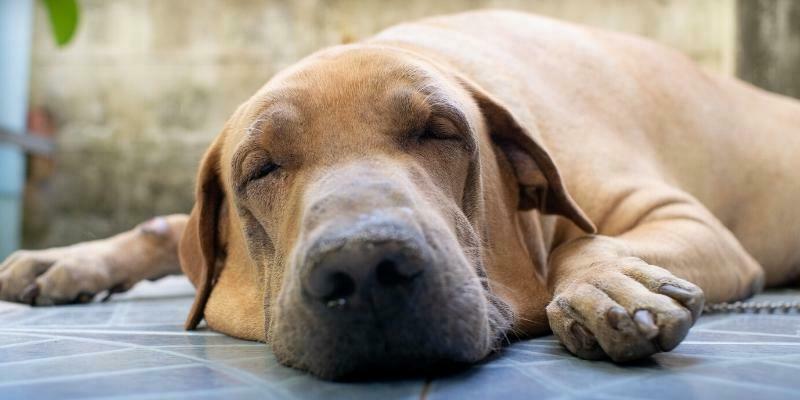
|
| |
Dog weight loss 101
|
|
| |
|
|
| |
Uh oh, your dog’s body weight has crept up… Unfortunately, being overweight can predispose pets to joint injuries, breathing problems, heart issues and some cancers.
But don’t worry - we’re here to help, starting with some tips for healthy, gradual weight loss in dogs.
- Determine your dog’s weight loss target
If your dog is generally healthy and only mildly overweight, we’d recommend determining their current body condition score (BCS), and then implementing their weight loss program, reassessing them every week or two until they’re at their ideal condition.
If you’re feeling unsure, or if your dog is significantly overweight or has pre-existing health issues, we’d recommend a consultation with one of our vets for further assessment and advice. Some pets may require adjustments in their dietary or exercise plans to ensure they lose weight safely, with no risk of injury or nutritional deficiency.
- Adjust their diet
Mildly overweight pets may be able to lose weight with adjustments to their regular diet, such as cutting out most treats and any unhealthy table scraps, and reducing their meal portions by 10-20%.
Significantly overweight pets are generally best switched to a prescription weight loss diet. Not only do these diets provide helpful staged feeding guides, but they also help ensure that your pet will not suffer any nutrient deficiencies or excessive feelings of hunger whilst their calories are being restricted.
- Encourage regular, appropriate exercise
Whilst weight loss will largely rely on your pet’s diet, regular healthy exercise is important for keeping their metabolism chugging, and helping them to maintain strong muscle support.
Gentle-to-moderate intensity, low impact daily exercise (such as walking or wading in shallow water) is safest. If your pet is panting heavily, stop them for a rest and offer water. Avoid exercising your pet in hot or humid conditions, as this puts them at risk of heat stress.
What your dog loses in grams, they’ll gain in health and vitality! |
|
|
|
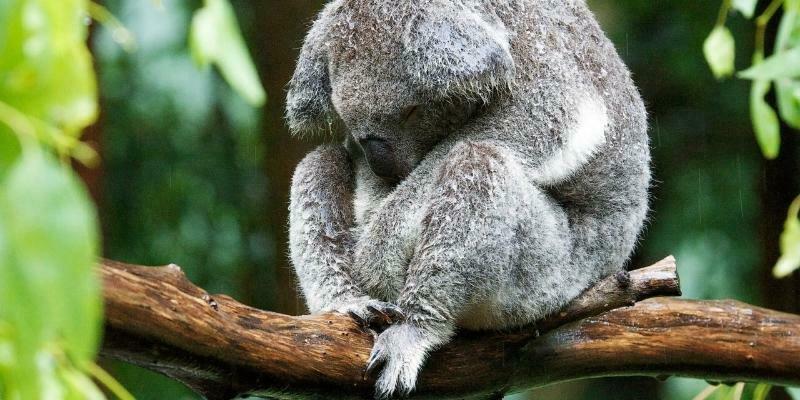
|
| |
How are the floods affecting our wildlife?
|
|
| |
|
|
| |
Image source: Australian Geographic
The 2022 floods have been deemed one of Australia’s worst recorded natural disasters. The torrential rain that submerged large areas of Queensland and New South Wales destroyed homes and left families, pets and livestock in strife - but what about wildlife?
Wildlife vary in their ability to survive floods, with most, unfortunately, copping it badly.
Many wild animals may survive the floods only to find their homes destroyed. Others may be displaced from their habitat, some far from home. This means the arduous journey back could take decades, facing predatory threats along the way, all while the possibility looms that, when they finally return, their habitat might be too damaged from the floods to settle in at all.
If wildlife are dependent on their habitat for the survival of their young, animals such as wombats, platypus and echidnas, aren’t equipped to flee floodwaters fast enough.
Pollution is also a consequence of floods, affecting fish and other animals through food chain contamination.
But - there are some small positives that our resilient creatures of the wild can effect.
For instance, most animals are actually born with the ability to swim. Many can also recognise signs of the floods ahead of time and migrate to safer, drier or higher land.
It’s been spotted that some spiders can even use their survival intelligence to devise unique, balloon-esque webs that can use wind power to transport them away to dry ground.
Floodwaters may also increase foraging opportunities for fish, waterbirds, turtles and other aquatic or semiaquatic animals with a host of beneficial nutrients.
Cleverly, microbats, pygmy possums and various reptiles can slow their metabolisms and sleep for an extended period of time to reduce their energy requirements, when floods make food sources sparse.
Although many Australian wildlife species are historically well adapted to dealing with periodic floods, whether they can survive when climate change accelerates the frequency and intensity of natural disasters, is a dismal uncertainty we fear to find out. One thing, the Australian Geographic writer Euan Ritchie notes, that we do know for certain, is that “climate change and biodiversity loss are inextricably linked.”
If you would like to help wildlife recover from the floods, you can donate to WWF Australia, WIRES and the RSPCA.
If you have found an injured or sick wild animal, contact the RSPCA 1300 ANIMAL Hotline (1300 264 625).
Read more about the effects of floods on wildlife from Australian Geographic. |
|
|
|
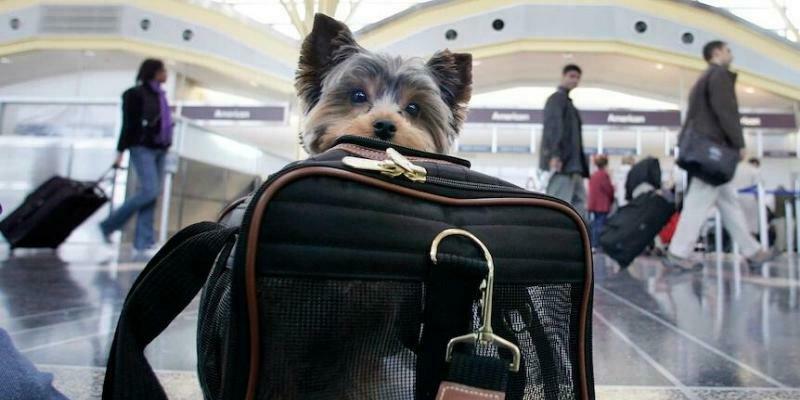
|
| |
Animal News In Brief
|
|
| |
|
|
| |
Image source: the ABC
What’s in a breed? The science behind dog personality traits
When selecting a new canine friend, it may seem like shopping for a specific breed will mean you can predict their personality, but a new study has recently suggested otherwise. According to the study, the personality traits of a dog are more closely related to their age, gender and environment than they are to their breed. Owners of the 18,000 dogs that participated in the study were asked eight questions to help define their furry friend’s characteristics, consisting of their abilities to follow direction, control impulses, play with toys, socialise with humans or dogs and stay collected when provoked by uncomfortable stimuli. From the results, study co-author Elinor Karlsson from the University of Massachusetts found that, "every behaviour was seen in every single breed.” Selective skills, such as hunting, guarding or herding, were linked by DNA to have evolved from ancestral wolves over thousands of years of dog-human synergy, presenting more commonly today in howling, pointing, retrieving and playing with toys. Traits, such as aggression and being provoked easily, however, had “almost no evidence of any breed differences'' and instead were influenced by circumstantial factors, rather than genetic ones. It was only in the Victorian era, a mere 160 years ago, that dogs first started to be bred for their colour, size and type of fur, paving the way for many of our furry family member’s breeds to exist today.
Read more about the study on dog breeds from the ABC.
-----
Pets on planes: new regulations let furry friends fly shotgun
Last December, the Civil Aviation Safety Authority announced updated regulations that would allow animals inside aircraft carriages - with a catch. The new regulations would only apply if individual airlines (such as Qantas, Jetstar, etc.) chose to take the regulation ‘on board’. With concerns about allergies and general comfort levels of passengers and staff, airlines aren’t ‘taking off’ at the opportunity to let furry friends fly with their owners. Another part of the challenge is that the recent CASA regulations refer to animals in general being allowed to fly in aircraft cabins, signifying that airlines would need to introduce strict policies to ensure safety, as “theoretically, [the animal on board] could be a boa constrictor," said CASA spokesman Peter Gibson. Although the idea is popular among the pet-owning public, due to these challenges, popular airlines remain unconvinced, with Qantas and Jetstar firmly against animals travelling alongside passengers, unless they are guide dogs, hearing dogs or assistance dogs. But there is hope - Rex airlines are yet to rule out the possibility and Virgin Australia continue an ongoing review of their pets on planes policy. In other places around the world, such as Europe and the United States, pets are already allowed to travel on planes. So who knows, as more demand grows, individual airlines might just let your best friend ride beside you, as one more travel buddy to fight for the window seat.
Read more about the CASA pet regulations from the ABC.
-----
Cat learns sign language to communicate with owner
Just like the invaluable support that assistance dogs bring to their owners, one cat has learned sign language to bridge the communication gap for its hearing-impaired owner. Posted as a video on Reddit, the footage shows a clever feline asking its owner for food through a demonstration of visual cues. By tapping the owner’s arm with its paw, while sitting at the dinner table, the owner acknowledges that his cat wants something and signals to the cat that he wants to be told visually what the cat wants. His cat then communicates that it wants food by impressively putting its paw to its mouth. This is repeated in the video and proves it isn’t simply a fluke. The caption of the viral video read, "when this deaf man's cat realised that meowing was useless, he learned to communicate with him through signs." Now viral, this video raises questions about what cats are capable of when working with their owners. One user on the video’s platform commented that cats are actually “largely silent because of their predatory nature. They vocalise at humans because they realised we love it.” So, next time you’re communicating with your feline friend, maybe you could opt for a visual cue over a verbal one.
Read more about the sign language cat from Indiatimes. |
|
|
|
| |
This email contains comments of a general nature only and is not intended to be a substitute for professional veterinary advice. It should not be relied on as the basis for whether you do or don't do anything.
All content © PetPack 2022 |
|
|
|
[Footer]
|